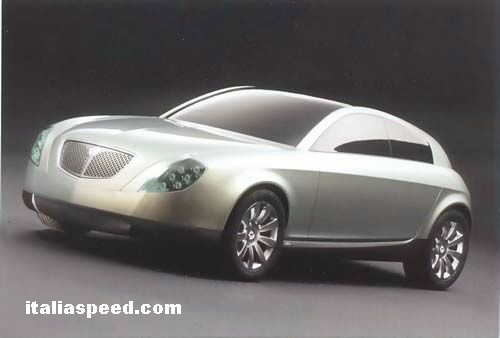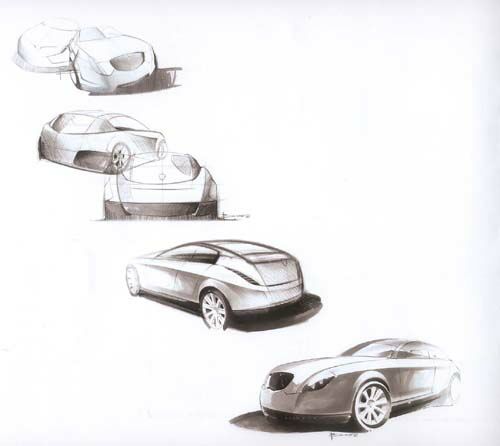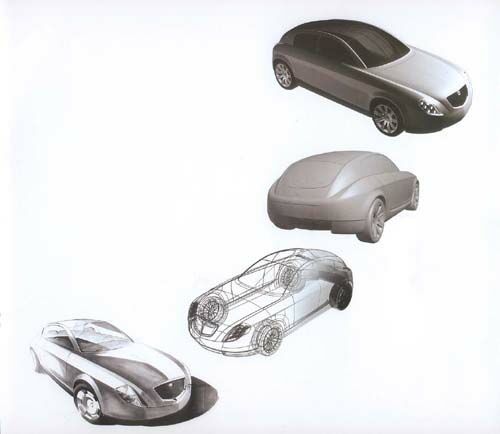| Lancia Thesis based "Grand
Tourer" designed and built by Carcenano in a joint project with Maggiori
and Lancia Centro Style. Made a low key debut at the 2002 Paris Motor Show.
Piero Luigi Carcenaro set
up his own company, Carcenaro Design, in Turin in 1996 after sixteen years
with Lancia, to push forward the boundaries of design using advanced mathematical
and computer aided thinking. His 80-strong company has carried out work
for Audi, BMW, Ferrari, Fiat, Mercedes, Mitsubishi, Opel, Saab and Suzuki
in its six year history.
The car, based on the Thesis
floorpan, has drawn praise for its styling and details. The clean, flowing
lines give it an attractive "Grand Turismo" look and the attention-to-detail,
especially in the neat front and rear lights have created an integrated
design. The large Lancia grille gives it the "family" look, and it sits
easily idenifiable with its Thesis heritage. Assisting Pier Luigi Carcenaro
in the design has been Lancia designer Andrea Bassi who was involved with
both the Dialogos and Nea concept cars. His influence can be seen especially
in the rear end which is almost all Nea styling.
The Granturismo follows an
emergining trend of having much smaller rear hinged "suicide" doors which
assist the Granturismo to draw on the Dialogos' "living room" theme. The
front lights follow the fashion of multiple internal bulbs, six separate
bulbs illuminate the cars path. In fact Piero Luigi Carcenaro, one of the
foremost proponents of the use of computers in car design is believed to
have styled the lights for the new Ferrari Enzo.
The Granturismo is 4620mm
long, 1920mm wide and 1210mm high. |













